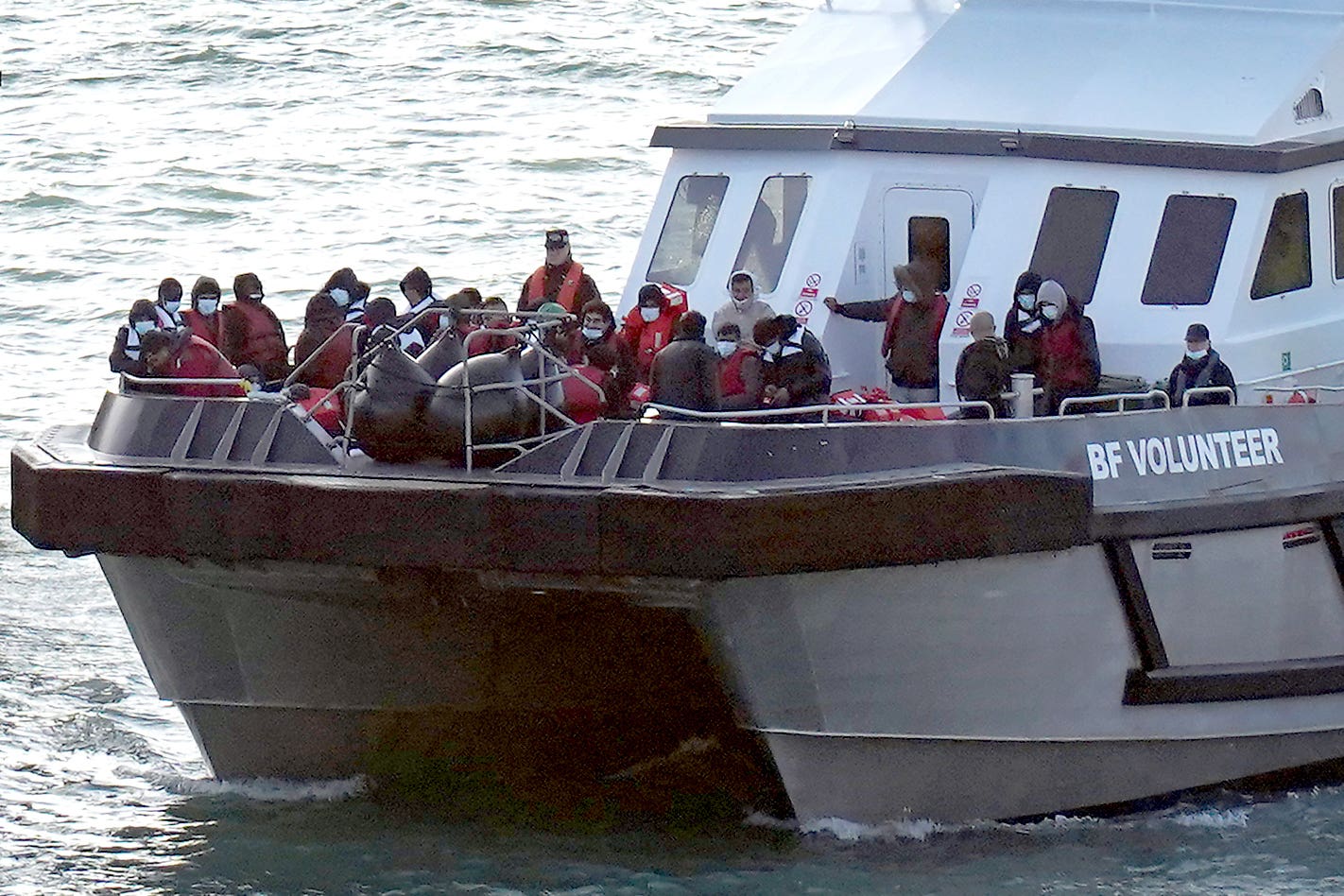Small boat crossings of the English Channel: Key numbers
Albanians accounted for 45% of crossings in July-September 2022 but only 9% in October-December.

Here are some of the key statistics for people arriving in the UK after crossing the English Channel in small boats:
– How many people have made the crossing?
The number has increased steadily each year since 299 people were detected making the journey in 2018.
There were 1,843 crossings in 2019, 8,466 in 2020 and 28,526 in 2021, according to the Home Office.
The total in 2022 – 45,755 – was 60% higher than the figure for 2021.
Some 2,950 people made the crossing in the first two months of 2023, provisional figures show.
This compares with 1,482 in the same period last year.
– Who are the arrivals?
In 2021 more than half of those detected crossing the Channel were of Iranian or Iraqi nationality (30% and 22% of the total respectively).
A further 10% were Eritrean, 9% were Syrian and 5% were from Afghanistan.
2022 saw a change in the breakdown of nationalities, with Albanians accounting for 28% of arrivals – the highest proportion of any group.
Afghans accounted for 20%, Iranians 13% and Iraqis 10%.
Albanian arrivals peaked during July to September 2022, when they accounted for nearly half (45%) of all detected crossings.
In October to December this proportion fell to just 9%.
By contrast, Afghan nationals accounted for 13% of arrivals in July-September but 33% in October-December.
All figures are based on the total number of arrivals for whom nationality has been recorded by the Home Office.
– What age and sex are the people making the crossing?
Males accounted for 87% of small boat arrivals in 2022 – similar to the proportion each year from 2018 to 2021.
Some 12% of all arrivals last year were males under the age of 18, the same proportion as in 2021.
A further 34% were males aged 18-24 (32% in 2021), while 35% were males aged 25-39 (40% in 2021) and 6% were males aged 40 and over (5% in 2021).
These figures are based on the total number of arrivals where age and sex has been recorded.
– How many are making the crossing per boat?
The monthly average has been on an upwards path since the start of 2021.
In 2018 there were fewer than 10 people per boat, while in 2019 and 2020 the figure tended to fluctuate between single figures and the high teens.
From 2021 the average started to increase, reaching 20 in March and passing 30 in August.
It reached 40 people per boat in June 2022 and hit 47 in October, before falling slightly to 42 in December.
– How many apply for asylum?
A total of 35,836 asylum applications were made by arrivals in 2022 – some of which will have included more than one person, such as a dependant – and of this figure, just 340 had received an initial decision by the time the latest data was published in February this year.
Some 703 applications had been withdrawn, but the vast majority (34,793) were still awaiting a decision.
Of the 340 that received a decision, 210 were granted refugee status or another type of leave to remain, 87 were refused, and 43 were not considered on “third country grounds” – meaning the UK Government instead sought the person’s removal to a safe third country because the applicant had a connection to that country where they could “reasonably have been expected to claim asylum” before reaching the UK.